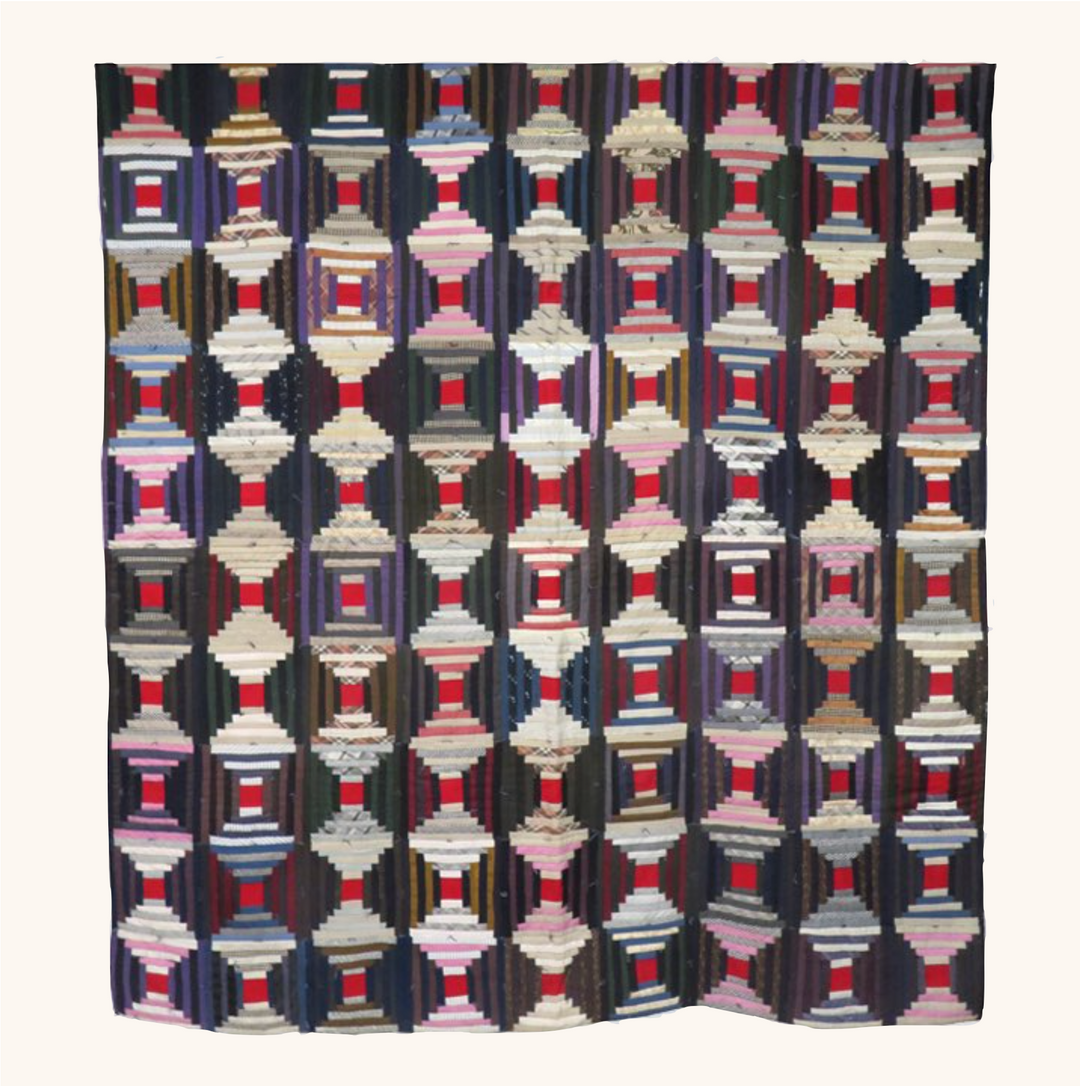Checkmate - Antique Log Cabin Quilt
Regular price£2,700.00 Sale priceAn eclectic Log Cabin Courthouse Steps Quilt c.1890s displaying an impressive array of colours - from purples, blues, and reds - and a high level of technical skill. The edging of this piece is of a pillowcase finish, embellished with intricate stitching. Turning the quilt over reveals an unexpected but delightful floral on black backing.
The Log Cabin quilt holds beautiful cultural significance; in the time of the Underground Railroad, these quilts hung on a windowsill were used to signify a safe place where an enslaved person on the run could seek shelter.
Please note slight signs of wear to be expected due to age. There are a few imperfections noticeable around the edge of this quilt
*this item requires a separate shipping quote on request
Naum House can source antique American quilts - please contact shop@naumhouse.com.
Pickup currently unavailable
180 x 203 cm
Professional cleaning recommended
Quilts in the late 17th and 18th centuries were more than just textiles, they were a decorative muscle flex to show off the talents of the makers. Women of this period, often precluded from the fine arts, could find expression in the making of functional items such as quilts. Quilts demonstrated skills in colour composition, graphic arrangement, and fine needlework; some of the designs were so elaborate that they could take years to produce.
Women often came together to help one other complete the quilts, eschewing a sense of individual authorship for the process of communal collaboration. They were treated as eternal gifts, cherished heirlooms to mark significant life events. Mothers would make quilts over the years to give to each child when they left home. In the 1800s, there was a custom for American young women to prove their maturity through quilting - they could only become engaged once they had stitched 12 quilt tops, and only after could they finish them with backing.
These objects, crafted with so much care and intention, documents of a historical past that no longer exists, exuberant studies in colour and form, precursors to our current world of pixelated optics and imbued with the hand of each maker, are true works of art.








